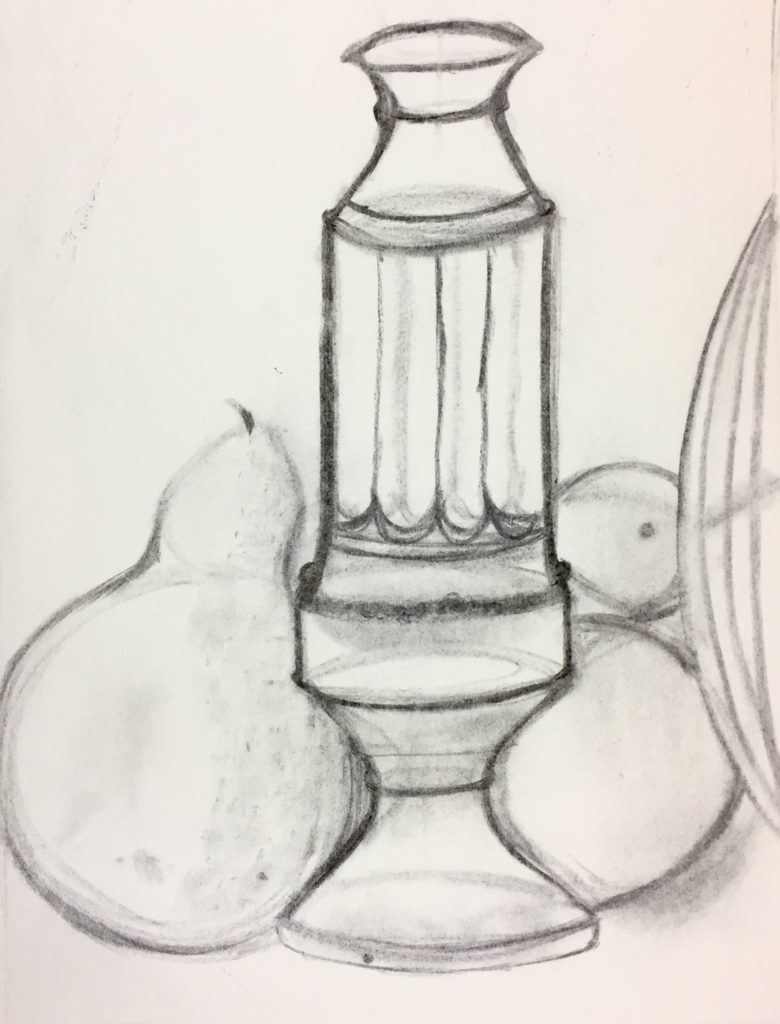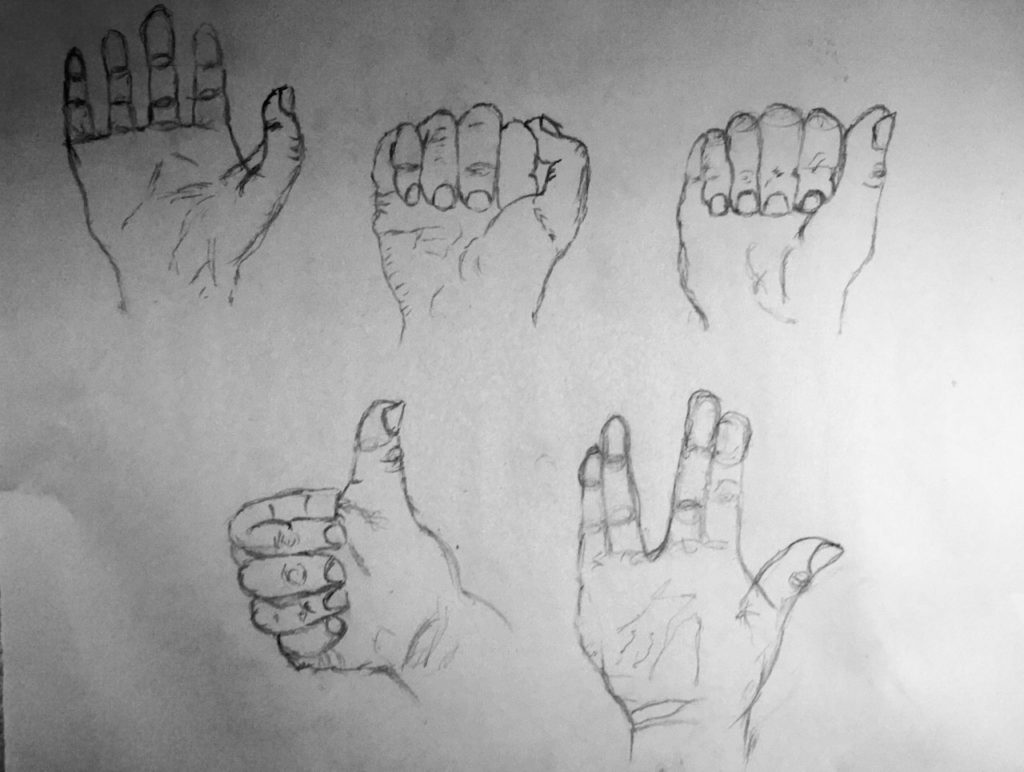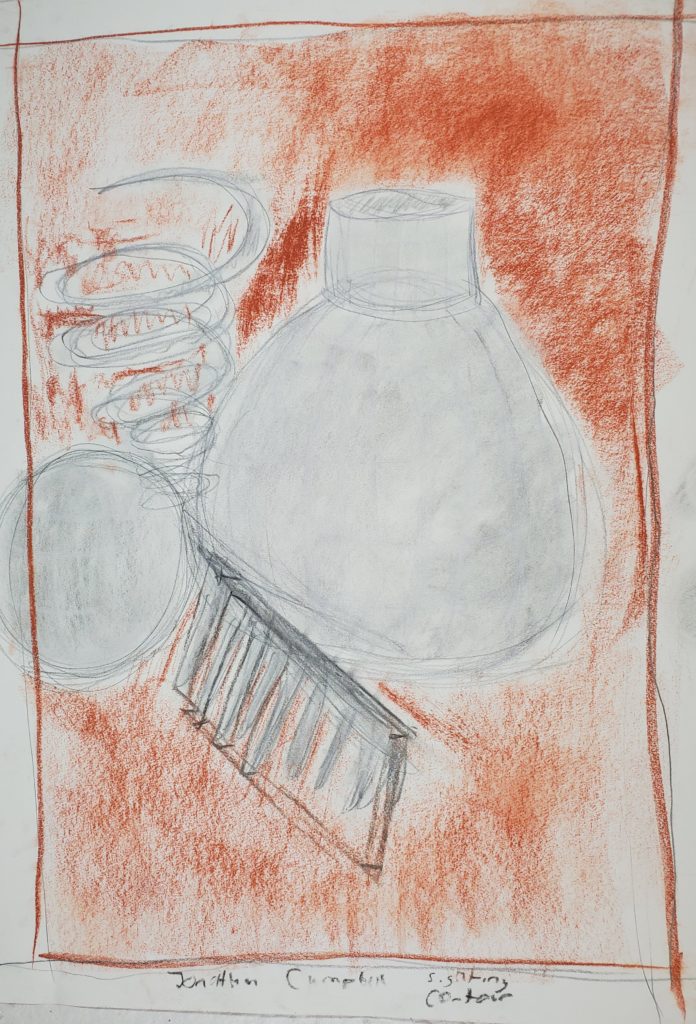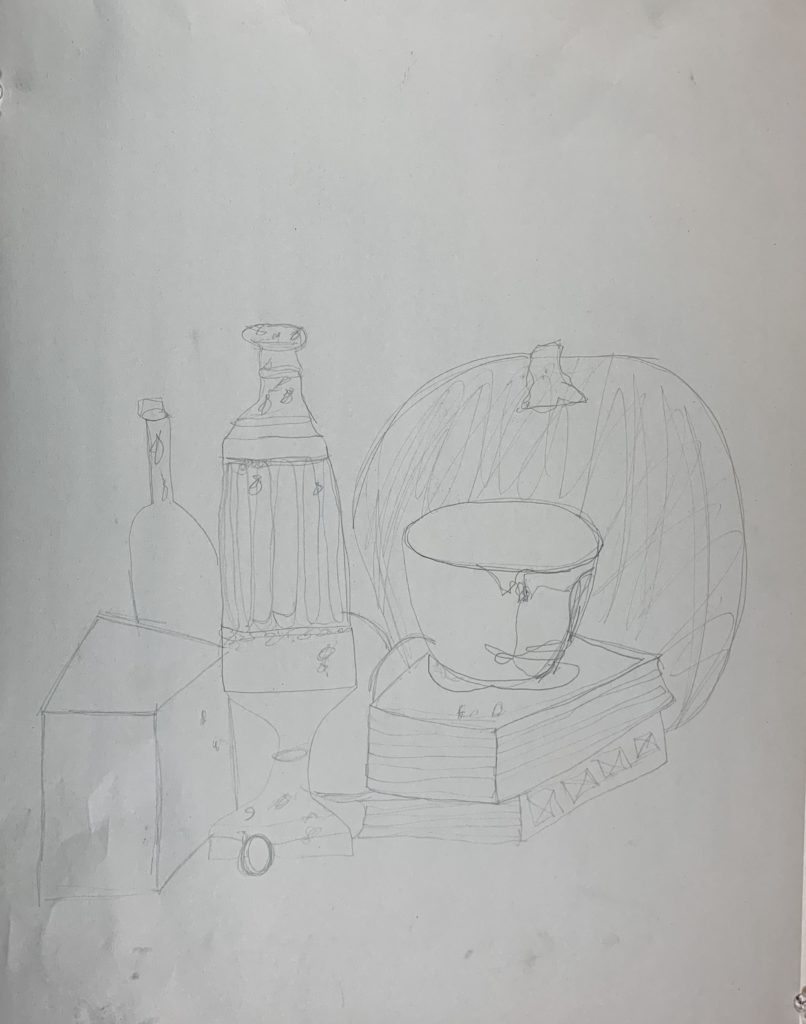
This drawing highlights the complexity of objects through the use of contour lines, marks, and shadows. The use of contour lines and values is important to differentiate the objects from one another, despite similar coloring on a few of the objects (including the pumpkin and gourd). To create this drawing, I outlined the basic shapes of the still-life with vine charcoal and then proceeded to add some dimension and form to create a 3-D effect. After the object were all correctly placed and shaped, I continued using vine charcoal to add details in the form of contour marks and shadows on and around the objects. The drawing uses elements of basic shapes and forms, as well as contour and value.





